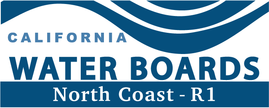- Home
- about us
- water boards structure
Water Boards Structure
State Water Resources Control Board and Regional Water Quality Control Boards Working together to protect California’s water resources.
State Water Resources Control Board Mission
To preserve, enhance, and restore the quality of Californias water resources,
and ensure their proper allocation and efficient use for the benefit of present
and future generations.
What the State Water Resources Control Board Does
Created by the State Legislature in 1967, the five-member Board protects water
quality by setting statewide policy, coordinating and supporting the Regional
Water Board efforts, and reviewing petitions that contest Regional Board actions.
The State Board is also solely responsible for allocating surface water rights.
Each of the five full-time salaried board members fills a different specialized
position (representing the public, engineering expertise, water quality expertise
and water supply). The members are appointed to four-year terms by the Governor
and confirmed by the Senate.
What the Regional Water Quality Control Boards Do
There are nine regional water quality control boards statewide. The nine Regional
Boards are semi-autonomous and are comprised of seven part-time Board members
appointed by the Governor and confirmed by the Senate. Regional boundaries
are based on watersheds and water quality requirements are based on the unique
differences in climate, topography, geology and hydrology for each watershed.
Each Regional Board makes critical water quality decisions for its region,
including setting standards, issuing waste discharge requirements, determining
compliance with those requirements, and taking appropriate enforcement actions.
State Water Board Programs
The State Water Board has four major programs.
- Water Quality: The State Water Board works in coordination with the Regional Water Boards to preserve, protect, enhance and restore water quality.
- Financial Assistance
The State Water Board provides loans and grants for constructing municipal
sewage and water recycling facilities, remediation for underground storage
tank releases, watershed protection projects, and for nonpoint source pollution
control projects. The State Water Board has several financial programs
to help local agencies and individuals prevent or clean up pollution of
the states water.
- Water Rights
Anyone wanting to divert water from a stream or river not adjacent to their
property must first apply for a water right permit from the State Water
Board. The State Water Board issues permits for water rights specifying
amounts, conditions and construction timetables for diversion and storage.
Decision-making stems from water availability, prior water rights and flows
needed to preserve instream uses, such as recreation and fish habitat.
- Enforcement
The State Water Board and the nine Regional Water Quality Control Boards
are responsible for swift and fair enforcement when the laws and regulations
protecting our waterways are violated. The State Water Board has recently
created an Office of Enforcement to assist and coordinate enforcement activities
statewide. The Water Boards also work with federal, state and local law
enforcement, as well as other environmental agencies to ensure a coordinated
approach to protecting human health and the environment.
Water Boards’ Strategic Goals
- Goal 1 - The Boards’ organizations are effective, innovative, and responsive.
- Goal 2 - Surface waters are safe for drinking, fishing, swimming, and support
healthy ecosystems and other beneficial uses.
- Goal 3 - Groundwater is safe for drinking and other beneficial uses.
- Goal 4 - Water resources are fairly and equitably used and allocated consistent
with public trust.
- Goal 5 - Individuals and other stakeholders support our efforts and understand
their role in contributing to water quality.
- Goal 6 - Water quality is comprehensively measured to evaluate protection
and restoration efforts.
For more information, or if you have any questions Contact the Office of Public
Affairs



